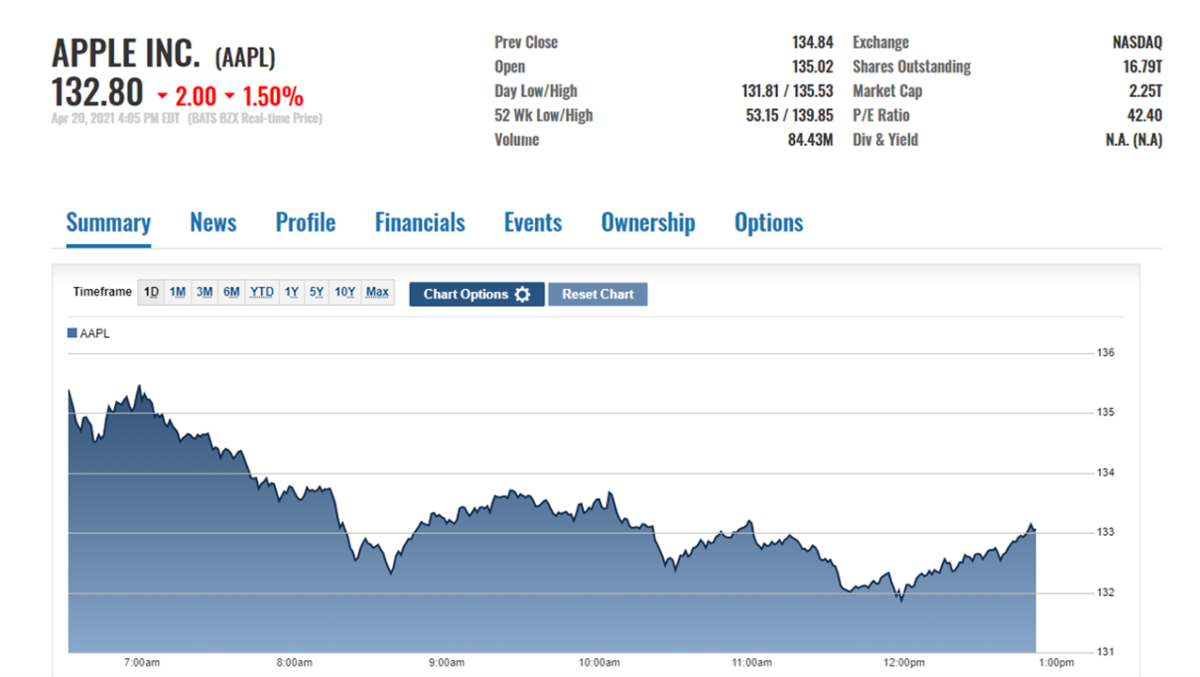Navigating The China Market: Case Studies Of BMW, Porsche, And Others

Table of Contents
Understanding the Chinese Consumer
Successfully navigating the China market hinges on a deep understanding of its diverse consumer base. The Chinese consumer is not a monolith; their preferences are shaped by a multitude of factors, requiring a sophisticated and localized approach.
Shifting Consumer Preferences
The Chinese market is characterized by rapidly shifting consumer preferences. Several key trends influence purchasing decisions:
- Rising Middle Class: A rapidly expanding middle class fuels demand for higher-quality goods and services, including premium automobiles.
- Preference for Luxury Brands: Luxury brands hold significant appeal, signifying status and success. This is particularly true in the automotive sector.
- Tech-Savviness: Chinese consumers are highly tech-savvy, relying heavily on digital platforms for information and purchasing. This necessitates a strong online presence and effective digital marketing strategies.
- Increasing Environmental Awareness: Growing environmental concerns are influencing purchasing decisions, with consumers increasingly favoring fuel-efficient and environmentally friendly vehicles.
- Social Media Influence: Social media plays a crucial role in shaping opinions and driving purchasing decisions. Brands must leverage social media effectively to build brand awareness and engage with consumers.
Adapting to these trends is critical. For example, many automotive brands are now offering electric and hybrid vehicles tailored to the Chinese market's increasing environmental consciousness.
Regional Variations
China’s vast geographical expanse translates into significant regional variations in consumer preferences and purchasing power. A "one-size-fits-all" approach is unlikely to succeed.
- Tier 1 vs. Tier 2 and 3 Cities: Consumer preferences and purchasing power differ drastically between major metropolitan areas (Tier 1 cities) and smaller cities (Tier 2 and 3).
- Differences in Purchasing Power: Income levels vary widely across regions, impacting consumer choices and the types of vehicles they can afford.
- Cultural Nuances: Cultural differences influence marketing messages and product design. Understanding these nuances is vital for effective communication.
- Varying Preferences in Vehicle Types: Demand for different vehicle types—SUVs, sedans, electric vehicles—varies by region.
Companies must tailor their marketing and product offerings to these regional differences. For instance, a brand might emphasize fuel efficiency in Tier 2 cities where consumers are more price-sensitive, while focusing on luxury features in Tier 1 cities.
BMW's China Strategy: A Case Study of Success
BMW’s success in China serves as a model for effective market entry strategy. Their approach demonstrates the importance of localization, customization, and cultivating strong brand loyalty.
Localization and Customization
BMW’s strategy involves significant localization and customization efforts:
- Production in China: BMW has established manufacturing facilities in China, reducing import costs and tailoring production to meet local demand.
- Localized Marketing Campaigns: BMW's marketing campaigns are tailored to resonate with Chinese consumers, reflecting local culture and values.
- Focus on Digital Channels: BMW leverages digital marketing channels, including social media and e-commerce platforms, to reach its target audience.
- Collaboration with Chinese Partners: Collaborating with local partners has been instrumental in navigating the complexities of the Chinese market.
These efforts have enabled BMW to significantly increase its market share in China.
Building Brand Loyalty
BMW has invested heavily in building long-term brand loyalty in China:
- Customer Service Initiatives: Exceptional customer service is a key element of BMW's strategy, fostering customer satisfaction and loyalty.
- Sponsorship Deals: BMW engages in strategic sponsorship deals to enhance brand visibility and association with positive values.
- Community Engagement Programs: BMW invests in community engagement programs, strengthening its relationship with local communities.
By focusing on superior customer service and building strong relationships, BMW has cultivated a loyal customer base in China.
Porsche's China Strategy: Focusing on the Luxury Segment
Porsche has successfully targeted the affluent Chinese consumer, leveraging its brand heritage and exclusive image.
Targeting High-Net-Worth Individuals
Porsche's strategy is centered around attracting high-net-worth individuals:
- Exclusive Dealerships: Porsche maintains exclusive dealerships, creating a premium brand experience.
- Bespoke Services: Porsche offers bespoke customization services, catering to the unique demands of its affluent clientele.
- Emphasis on Brand Heritage and Craftsmanship: Porsche highlights its brand heritage and commitment to craftsmanship, appealing to consumers who value quality and exclusivity.
This approach has solidified Porsche's position as a leading luxury brand in China.
Digital Marketing and Brand Building
Porsche leverages digital marketing effectively to reach its target audience:
- Social Media Engagement: Porsche engages actively on social media, building brand awareness and fostering customer interaction.
- Targeted Advertising: Porsche employs targeted advertising campaigns to reach specific segments of its target audience.
- Online Sales Channels: Porsche utilizes online sales channels to make purchasing more convenient for its customers.
Digital marketing plays a significant role in building brand awareness and driving sales.
Challenges and Opportunities in the China Market
Despite the significant opportunities, navigating the China market presents challenges:
Regulatory Hurdles and Government Policies
Companies must navigate a complex regulatory landscape:
- Import Tariffs: High import tariffs can significantly impact profitability.
- Environmental Regulations: Stringent environmental regulations require adaptation of vehicle technology and manufacturing processes.
- Local Content Requirements: Regulations often require a certain percentage of locally sourced components in vehicle production.
Understanding and adapting to these regulations is crucial for success.
Competition and Market Saturation
The Chinese automotive market is fiercely competitive:
- Competition from Domestic and International Brands: Competition from both domestic and international brands is intense.
- Price Wars: Price wars are common, requiring brands to differentiate themselves beyond price.
- Market Saturation in Certain Segments: Certain segments of the market are already saturated, requiring strategic market segmentation.
Differentiation and innovation are crucial to maintaining a competitive edge.
Conclusion
Successfully navigating the China market requires a deep understanding of the Chinese consumer, a commitment to localization and customization, and the ability to navigate a complex regulatory landscape. The case studies of BMW and Porsche highlight the importance of building brand loyalty, leveraging digital channels, and tailoring strategies to specific regional markets and consumer segments. Successfully navigating the China market requires a long-term perspective, significant investment, and a commitment to adapting to the ever-changing dynamics of this dynamic market. Learn more about effective China market entry strategies and unlock the potential of the China market by developing a comprehensive and localized approach.

Featured Posts
-
 How To Buy Bbc Big Weekend 2025 Sefton Park Tickets
May 24, 2025
How To Buy Bbc Big Weekend 2025 Sefton Park Tickets
May 24, 2025 -
 Billie Jean King Cup Qualifier Kazakhstans Stunning Win Against Australia
May 24, 2025
Billie Jean King Cup Qualifier Kazakhstans Stunning Win Against Australia
May 24, 2025 -
 Skolko Let Akteram Sygravshim V Filme O Bednom Gusare Zamolvite Slovo
May 24, 2025
Skolko Let Akteram Sygravshim V Filme O Bednom Gusare Zamolvite Slovo
May 24, 2025 -
 Apple Stock Aapl Predicting The Next Key Price Levels
May 24, 2025
Apple Stock Aapl Predicting The Next Key Price Levels
May 24, 2025 -
 Le Controle Chinois En France Les Dissidents Dans Le Viseur
May 24, 2025
Le Controle Chinois En France Les Dissidents Dans Le Viseur
May 24, 2025
Latest Posts
-
 University Of Marylands 2025 Commencement A Special Guest Speaker
May 24, 2025
University Of Marylands 2025 Commencement A Special Guest Speaker
May 24, 2025 -
 2025 Commencement Kermit The Frog To Address University Of Maryland Graduates
May 24, 2025
2025 Commencement Kermit The Frog To Address University Of Maryland Graduates
May 24, 2025 -
 Kermit The Frog University Of Marylands 2024 Commencement Speaker
May 24, 2025
Kermit The Frog University Of Marylands 2024 Commencement Speaker
May 24, 2025 -
 Kermit The Frog To Deliver Commencement Address At University Of Maryland
May 24, 2025
Kermit The Frog To Deliver Commencement Address At University Of Maryland
May 24, 2025 -
 Kermits Commencement Speech University Of Maryland Class Of 2025
May 24, 2025
Kermits Commencement Speech University Of Maryland Class Of 2025
May 24, 2025
